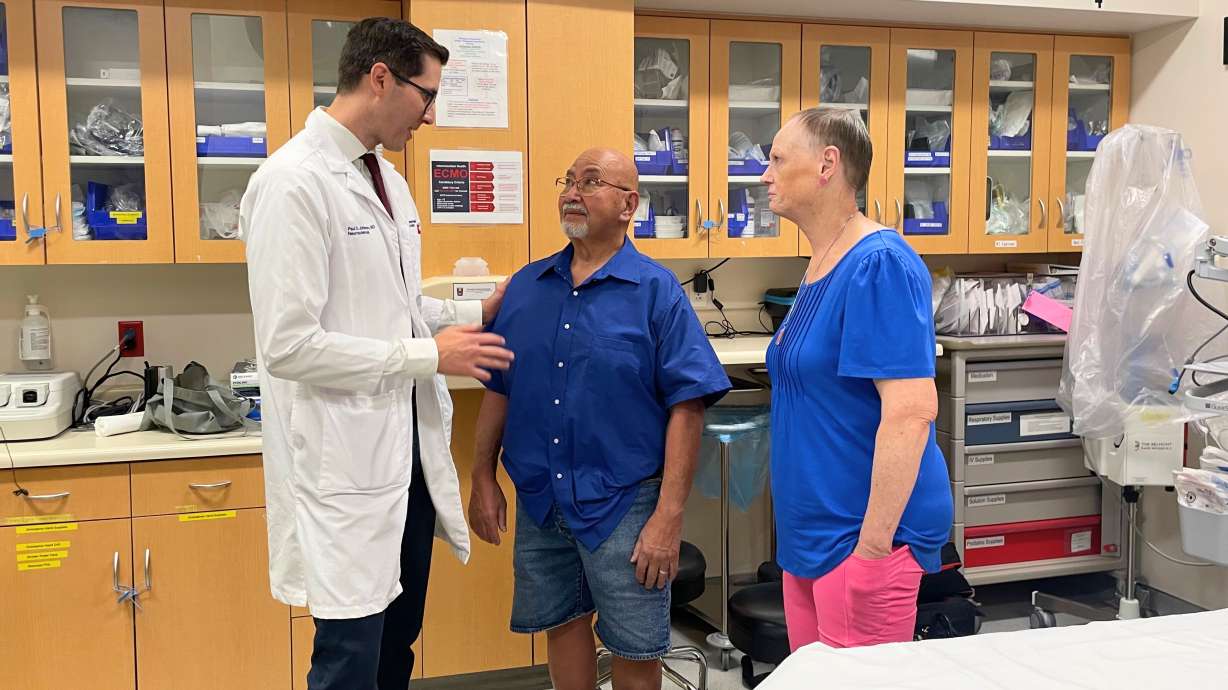MURRAY – Ann Itchon vividly recalls the night her husband, Ted, suffered a stroke, and the swift actions that followed saved his life.
Immediate Impact of Quick Medical Response
On January 23, 2024, Ted Itchon awoke around 2 a.m. and collapsed in the bathroom. His wife, Ann, quickly called 911, unaware that her husband was experiencing a stroke. By the time she reached the hospital, first responders had already administered a stroke-stopping medication, preventing further brain damage.
Dr. Paul Johnson, the neurologist who treated Ted that night, emphasized the critical nature of rapid response. “A stroke is a very time-sensitive disease,” Johnson stated. “Every minute you delay care, it costs brain cells.”
Key Details Emerge on Utah’s Stroke Treatment Success
Utah recently received recognition from the American Heart Association for leading the nation in rapid stroke treatment. According to Intermountain Health, 87.1% of stroke patients in Utah receive tissue plasminogen activator (tPA) within 45 minutes of hospital arrival, surpassing the national goal of 60 minutes.
94.5% of patients at Intermountain Health’s stroke centers receive tPA within 45 minutes, with 88% treated in 30 minutes or less.
Industry Response and Innovations
Dr. Johnson attributes Utah’s success to several innovations, including premixed medications, expedited CT scans, and improved emergency department workflows. A stroke neurologist is available 24/7 to ensure rapid diagnosis and treatment.
“We’ve worked closely with EMS crews, ER doctors, and nurses to shave off every minute we can,” Johnson explained. “This collaboration allows us to quickly gather necessary data and treat patients like Ted effectively.”
Expert Analysis on Stroke Prevention and Response
Strokes are the fifth-leading cause of death in the U.S., often affecting older adults with high blood pressure, cholesterol, or diabetes. Johnson stresses the importance of public awareness and quick action using the mnemonic BEFAST: Balance, Eyes, Face, Arms, Speech, and Time to call 911.
“Prevention is key,” Johnson said. “While not all strokes are preventable, 80% can be avoided with proper management of risk factors.”
Background Context and Personal Stories
Ted Itchon underwent a thrombectomy, a procedure to remove blood clots from the brain, alongside tPA treatment. Thanks to the swift medical response, he returned home just four days later, requiring only outpatient therapy for recovery.
“I can’t express my gratitude enough,” Ted said. “If it wasn’t for Ann’s quick thinking, I wouldn’t be where I am today.”
What Comes Next for Stroke Treatment in Utah
Utah’s approach to stroke treatment serves as a model for other states aiming to improve their response times. Continued focus on education and prevention remains crucial in reducing stroke incidences and improving outcomes nationwide.
For more information on stroke risk and recovery, visit the American Heart Association’s stroke website.
